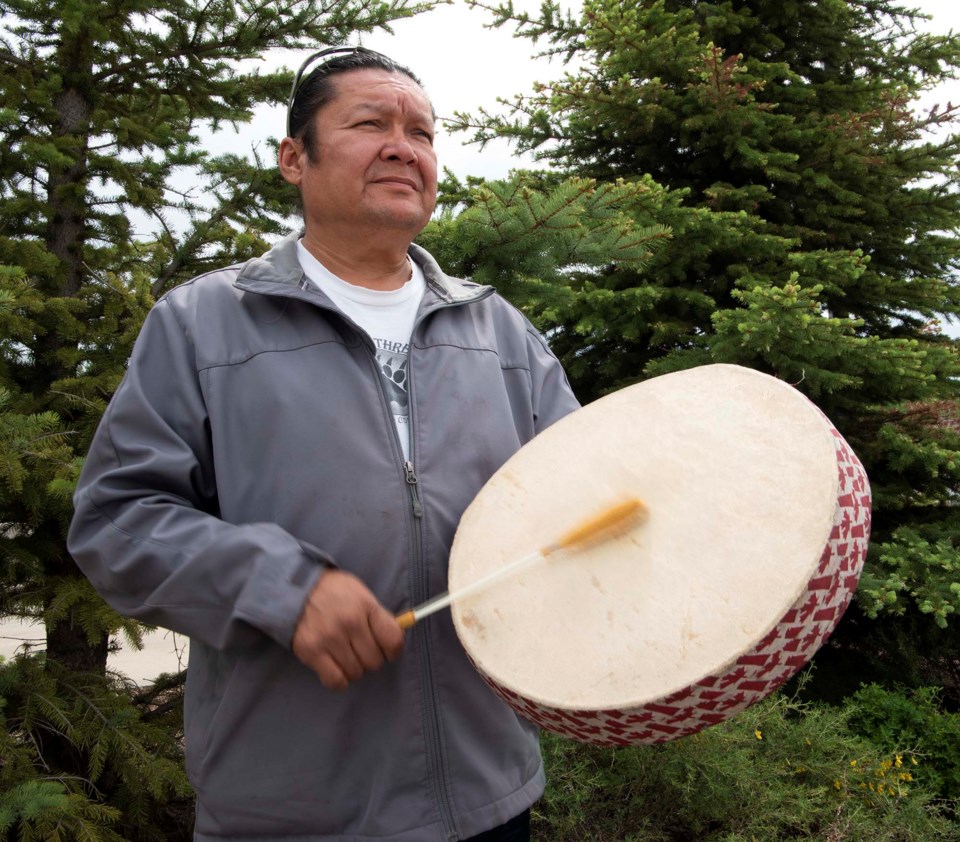Welcome to the 13th episode of the St. Albert Signal, a weekly community podcast about the St. Albert area. Listen to the 13th episode below:
There’s something about the beat of a First Nations drum that draws you in — a low, thunderous “boom, ba-boom” that shakes the soul and makes everyone stop and listen.
It’s the heartbeat of Mother Earth, and your heart beats in time with it, said St. Albert First Nations drummer and singer Ryan Arcand. It gets your toes tapping and your voice giggling.
“When you and that drum are going together, it is just an absolutely moving experience.”
Arcand is a well-known First Nations drummer and singer in the St. Albert region who often performs at public events such as National Indigenous Peoples Day (the celebrations for which were cancelled this year due to the pandemic).
The Gazette spoke with him earlier this month about the nature of the drum as part of National Indigenous Peoples Day.
Life of the drum
Arcand said he first encountered the drum at a powwow at Alexander First Nation in around 1978.
“When you hear that drum for the first time in your life, it’s like, 'Oh my God, what is that? That is so lovely, I need to go there,'” he said.
Arcand said he trained for many years with old masters such as the Sandy Lake Singers before becoming a full-time drummer/singer in about 1985. More recently, he has become lead instructor for the Sir George Simpson student drum circle.
Edmonton’s Adrian Foureagles Dancing LaChance said the drum sparked his interest in his cultural roots when he first heard it in 1991. Today, he plays and makes First Nations drums as a member of the Running Thunder Dancers.
Legends say the drum has been around since the dawn of humanity, LaChance said. One First Nations account says a woman saw the design for it form out of the clouds after she spent four days hiding in a pond and breathing through a reed. In Treaty 6 territory, the drum was traditionally seen as a male instrument, given to them by women to help them express their emotions. Nowadays, it is open to any gender.
LaChance said First Nations drums were traditionally made with buffalo hide stretched over frames of cedar, birch, or pine — modern drums may use elk, cow, or moose hide instead. The drumstick was typically willow, and was struck using a heartbeat-like “b-boom, b-boom” pattern. Some people decorated their drums, but he kept his plain — he was taught to view the drum as a grandfather, and you wouldn’t put paint on your grandfather.
Arcand has about 16 drums in a special room in his home. His favourite is a 25-year-old one with a Canadian flag motif he made using hide salvaged from another drum.
“It is well seasoned, just as I am!” he said, with a laugh, and he plans to never replace it.
Many drum songs include singing, which can involve chants or actual lyrics in various languages, and often act as a sort of cry for help to the Creator, LaChance said.
“It’s not about yelling and screaming. There’s a deeper prayer that’s attached to that song.”
The drum is life
To Arcand, the drum is a way of life.
“For me, singing is life,” he said — we all come into the world singing, and we all have a drum beating in our chests.
“You respect your life, and you respect your drum, and if you love life, you’ll love your drum.”
LaChance and Arcand agreed the drum is an instrument that brings people together. Arcand proudly spoke of how the Sir George Simpson students were able to sit and play together week after week despite coming from all different races and backgrounds.
“When we all sit around the drum, especially with the kids, it’s like they don’t see a race, they don’t see, ‘I’m better than you.’ There’s no competition. They’re all equal,” Arcand said.
“It’s the same thing when I’m out there singing with a group. We’re all equal. We’re all pulling together. We’re all singing together. We’re all hitting the drum together.”


